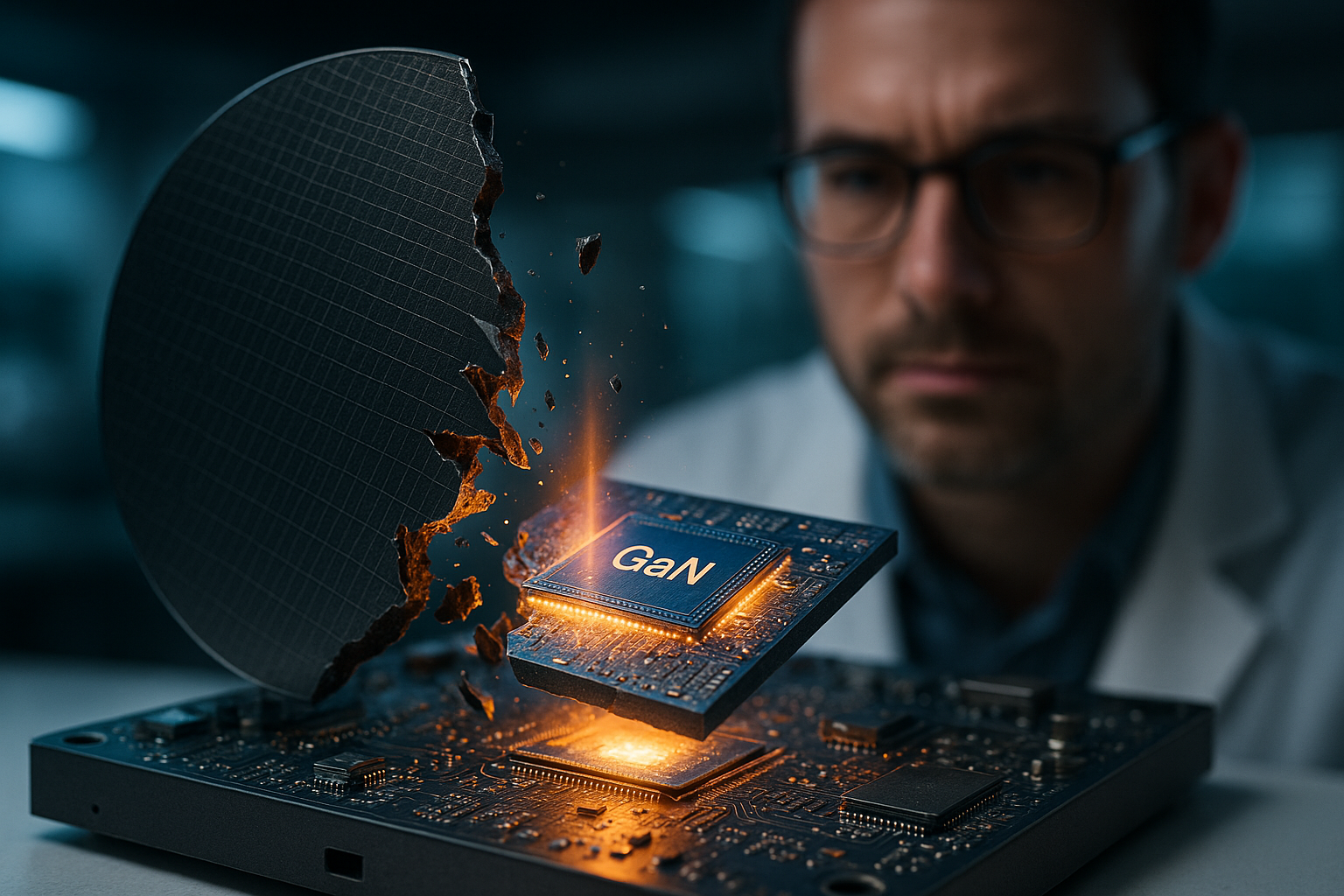Shattering the Silicon Ceiling: Gallium Nitride's Disruptive Entry into the Electronics World
The race to build faster, smaller, and more energy-efficient electronics has always been the heart of the tech industry. Gallium Nitride (GaN), an emerging material, is breaking new ground with its superior properties, challenging the dominance of silicon in the process. But what exactly is GaN, and why is it making such a significant impact?

GaN is a binary III/V direct bandgap semiconductor commonly used in light-emitting diodes since the 1990s. The material’s wide bandgap properties, high heat capacity, and high breakdown voltage make it an ideal candidate for high-power and high-temperature applications, where traditional silicon falls short.
The Advent of Gallium Nitride
The roots of GaN’s adoption in the electronics industry can be traced back to the early 1990s when Japanese scientist Shuji Nakamura developed the first GaN LED. Despite initial resistance, Nakamura’s work eventually led to the creation of blue, green, and white LEDs and laid the groundwork for future developments in GaN technology.
However, it was only in the past decade that GaN started to gain broader recognition. Companies like Efficient Power Conversion (EPC), GaN Systems, and Navitas have brought GaN-based products to the market, heralding a new era in power electronics.
GaN Today: Powering Up the Tech Industry
In recent times, GaN’s superior properties have led it to become an increasingly popular choice for power electronics, ranging from electric vehicle chargers to data centers and even consumer electronics.
For instance, Apple’s 96W USB-C Power Adapter, used for its MacBook Pro lineup, is reportedly using GaN technology, resulting in a more compact and efficient charger. Similarly, Anker and Belkin, popular tech accessory brands, have also released GaN-based chargers in recent years.
GaN’s Market Impact and Future Prospects
The GaN power device market is expected to grow at a compound annual growth rate of 29.1% from 2020 to 2027, reaching $1.24 billion, according to a report by Grand View Research. This growth is primarily driven by the increasing demand for energy-efficient power electronics in electric vehicles, renewable energy, and telecommunications.
However, GaN’s potential extends beyond just power electronics. Given its superior properties, GaN could also play a crucial role in next-generation wireless communication technologies, high-frequency radar systems, and even space applications.
Wrapping Up: A New Era in Electronics
There’s no denying that GaN’s superior properties make it a formidable contender in the electronics industry. However, the road to widespread adoption won’t be without its challenges. High cost and manufacturing complexities currently hamper GaN’s broader application.
Despite these hurdles, GaN’s potential is immense. As we push the boundaries of what’s possible in the tech world, materials like GaN will undoubtedly play a pivotal role in shaping the future of electronics. In this race to the future, it seems silicon may finally have met its match.




